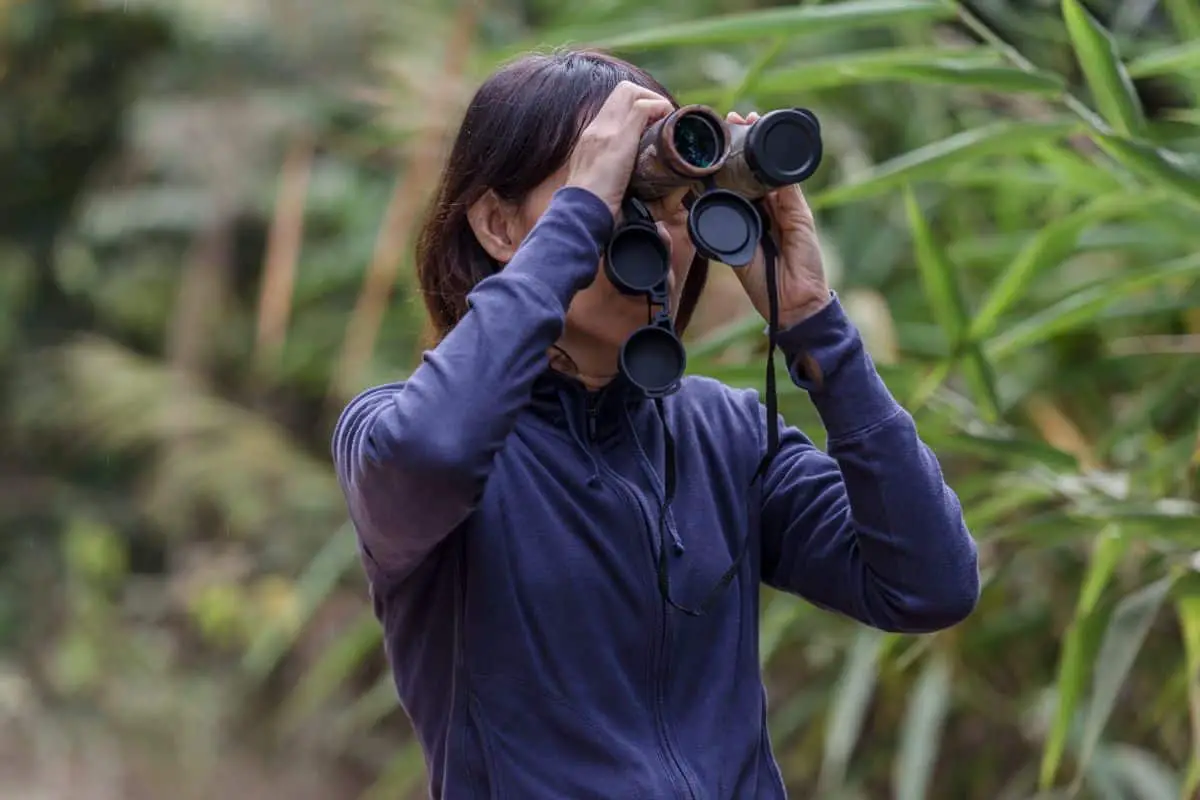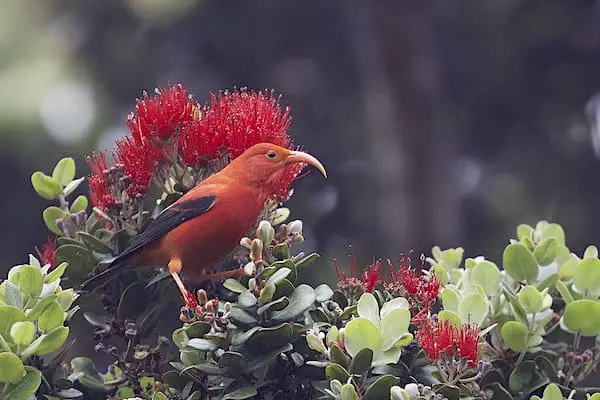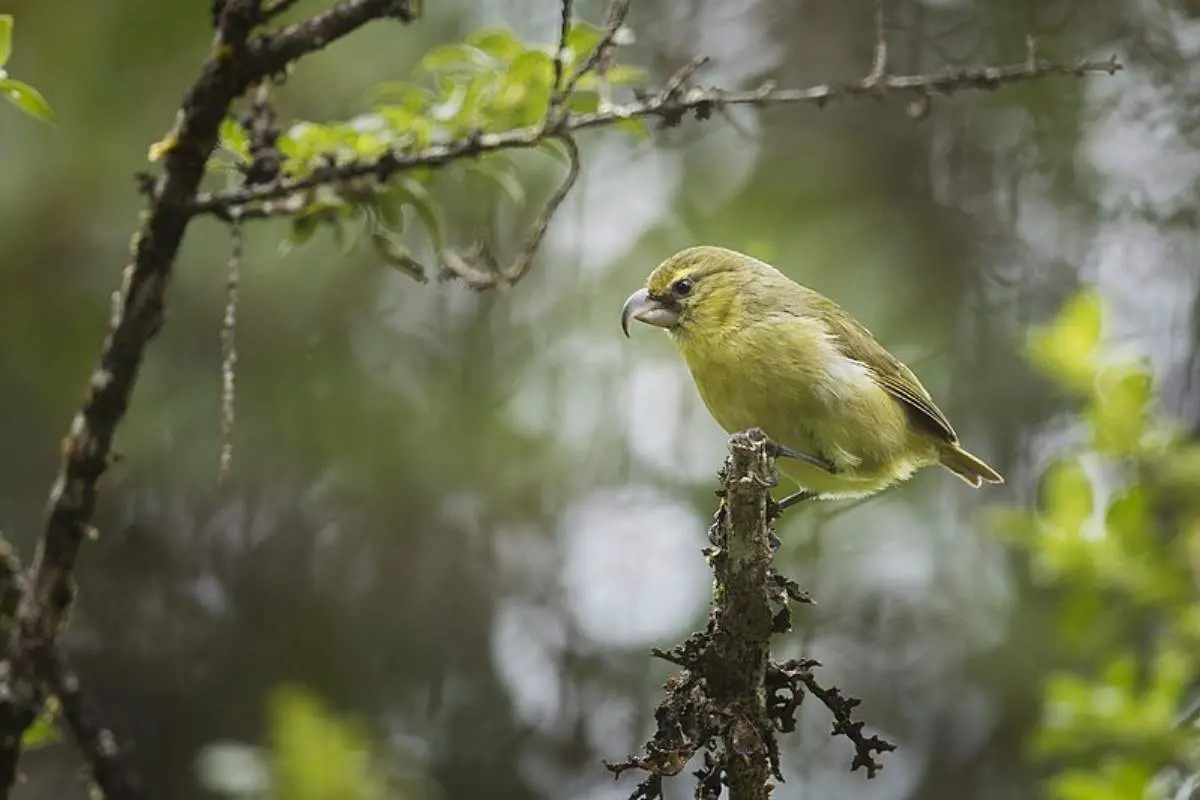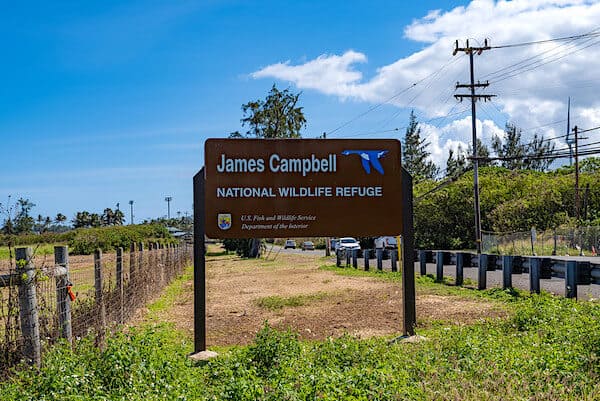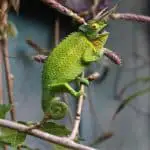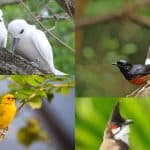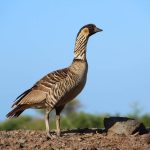Birdwatching in Hawaii is an exciting experience that combines the beauty of the islands with the diverse bird species that inhabit this tropical paradise. Hawaii boasts an array of endemic birds found nowhere else in the world that would excite any birdwatching enthusiast.
Exploring the rainforests, valleys, and coastal areas of Hawaii gives you ample opportunities to see these creatures in their natural habitats. This article will give you more information about some of the Hawaiian specialty birds you can look for on your birdwatching trip. It also contains tips about great places to visit that will help you check species off your list.
Birdwatching in Hawaii
The most common birds to see in Hawaii tend to be birds that aren’t even native to the islands. Many species from around the world have been introduced to Hawaii, either intentionally or unintentionally, and thrive there.
But if you’re interesting in doing some serious birdwatching in Hawaii, you probably want to try and see the species that are native. Many of these native birds are not found anywhere else in the world! Let’s start by looking at a few of the birds you can find only on the Hawaiian Islands, then we’ll talk about some of the best places to see them.
1. ‘I’iwi
-
Iiwi | image by Gregory “Slobirdr” Smith via Wikimedia Commons | CC BY-SA 2.0
Scientific Name: Vestiaria coccinea
The ‘I‘iwi is a gorgeous, endangered species of honeycreeper found mainly in Hawai‘i, Maui and Kaua‘i, with just a few on O‘ahu, and Moloka‘i. Once common on all the islands, loss of habitat, introduction of mammals and foreign disease has greatly reduced their population. Both males and females have a bright red body and black wings. They are characterized by a sharp pink beak that hooks downward. This beak helps them reach into flowers to collect nectar, their main food source.
Habitat: elevations above 4,100 feet, mesic and wet forest with ‘ohi’a and koa trees.
2. ‘Apapane

Scientific Name: Himatione sanguinea
‘Apapane have crimson feathers with black wings and tails, and white feathers under their tail and on their lower belly. Their beak is black with a slight downward curve. ‘Apapane are also members of the honeycreeper family that feed on nectar. Today they are considered the most abundant honeycreepers in Hawaii. They are mainly found on Hawai’i, Maui, Kaua’i, O’ahu and more rarely on Moloka’i and Lana’i.
Habitat: elevations above 4,100 feet, mesic and wet forest with ‘ohi’a and koa trees.
3. ‘Amakihi
Scientific Name: Chlorodrepanis virens
This species of honeycreeper is actually divided into three subspecies based on which island they frequent in Hawaii. There is the Hawai‘i ‘Amakihi, the Kaua‘i ‘Amakihi, and the O‘ahu ‘Amakihi.
They all look similar, with males having unique olive-green coloring and females having more muted plumage. They all have a sharp, curved bill that helps them more easily access nectar from flowers.
Habitat: shrubland and forest between 1,000 – 9,500 feet.
4. ‘Elepaio
Scientific Name: Chasiempis sandwichensis
The Hawai’i ‘elepaio is a small endemic species measuring only 5 inches long. It can be found on the island of Hawai’i, but other ‘elepaio are also present on Kaua’i and O’ahu. They are characterized by their small brown bodies, speckled with white on the wings and throat. Their vocalizations have been described as sounding like the squeaker in a dog toy.
As a member of the flycatcher family, they are insect eaters. They can pluck insects out of the air or snatch them off of foliage.
Habitat: forested areas above 2,000 feet, especially ‘ohi’a and ‘ohi’a-loa forests.
5. ‘Akepa
-
‘Akepa (Loxops coccineus) male | image by Carter T. Atkinson, U.S. Geological Survey via Wikimedia Commons
Scientific Name: Loxops coccineus
The ‘akepa is a beautiful orange bird endemic to the islands of Hawai’i, O’ahu, and Maui, however sightings are rare today anywhere other than the Big Island. Juvenile males are a muted, brownish orange, but as they mature, they gain the bright orange feathers this species is known for. The females are more of a gray-green color and have yellow chests.
‘Akepa are cavity nesters and require forests with large, older trees. They are members of the honeycreeper family but eat mostly insects it picks off flowering trees.
Habitat: isolated populations on Hawai’i, windward side above 4,300 feet. Highest density in Hakalau Forest National Wildlife Refuge.
6. Nene
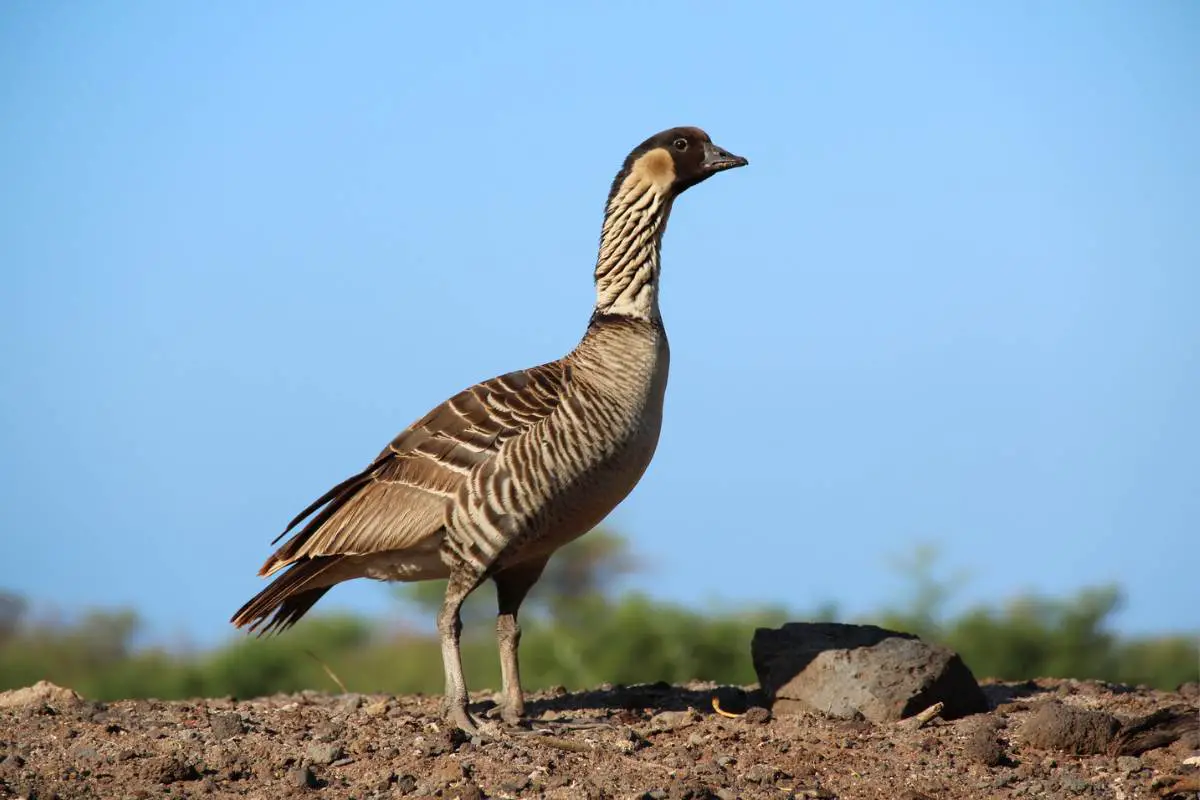
Scientific Name: Branta sandvicensis
Also known as the Hawaiian goose, the nene is a goose that is believed to have evolved from a Canada Goose. It has similar coloration with a brown body, black head and white cheek. Their neck feathers have a unique look, cream colored with deep grooves and ridges that give it the appearance of brown streaks.
When you think of geese, you might think of waterfowl, but the nene is actually more terrestrial, preferring to spend much of its time on land. With longer legs and less webbing between their toes, they are not as well adapted to the water as other goose species.
Today, the Hawaiian Goose is an endangered species, with only around 2,000 individuals remaining in the wild. They are mainly found on Hawai’i, Maui, Kauai’i and Moloka’i.
Habitat: lowland forest, grassland and shrubland between sea level and 7,800 feet. They like open areas such as coastal dunes, golf courses, parks and pastures.
7. Hawaiian Moorhen (‘Alae ‘ula)
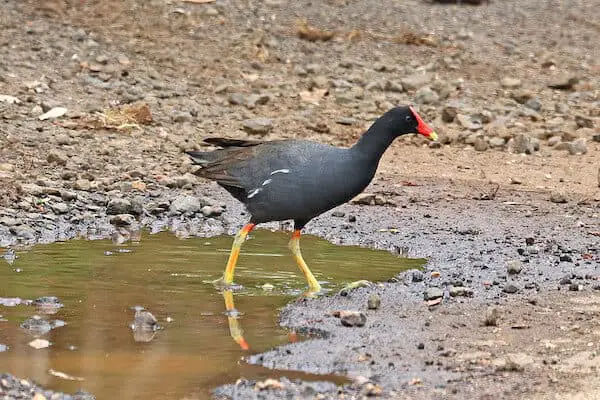
Scientific Name: Gallinula chloropus sandvicensis
The Hawaiian Moorhen (also called the Hawaiian Gallinule), is a Hawaii-specific subspecies of the common gallinule. Locally called ‘Alae ‘ula, this gallinule has a chicken-like body on thin legs, with extra large feet and toes. Their dark body is highlighted by a red forehead shield and beak tipped in yellow.
The Hawaiian gallinule is dependent on freshwater wetland habitats with dense emergent vegetation for nesting. Most populations of this bird can be found on Kaua’i and O’ahu, with some appearing on the Ke’anae peninsula on Maui or the Big Island.
Habitat: freshwater marshes and wetlands below 410 feet. Largest Kaua’i populations occur in Wailua & Hanalei river valleys. They also like irrigation canals around agriculture, and golf course/resort ponds.
8. ‘Akiapola’au
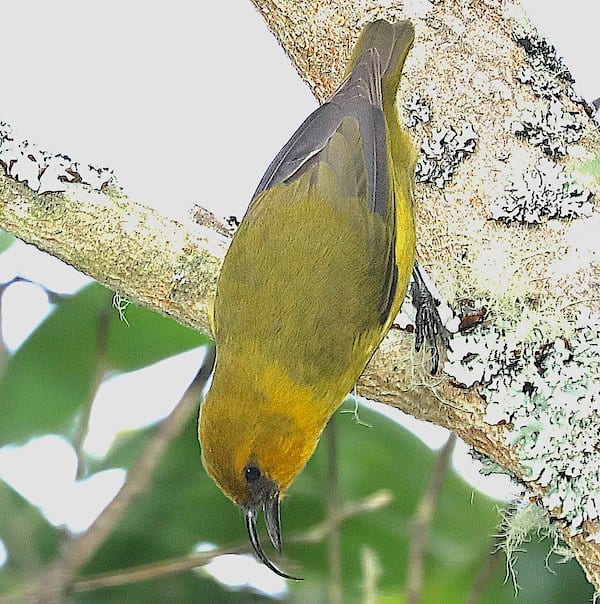
Scientific Name: Hemignathus munroi
Another honeycreeper species endemic to the island of Hawai’i is the ‘akiapola’au. The males of this species have bright yellow heads, while the females are a more muted olive color. The upper mandible of their beak is long and curved, while the lower mandible is shorter and straight. This allows the bird to drill holes with the lower beak and extract insects with the upper beak.
Habitat: High-elevation forests on the Big Island, particularly in areas with large koa trees.
9. Maui Parrotbill (Kiwikiu)
-
Maui parrotbill | image by Zach Pezzillo, Maui Forest Bird Recovery Project via Wikimedia Commons | CC BY-SA 4.0
Scientific Name: Pseudonestor xanthophrys
This endangered honeycreeper species, also called Kiwikiu, is only found on Maui. The Maui parrotbill has a bright yellow chest with more muted olive feathers along the back. They are characterized by a bright yellow line above each eye. While the males and females look similar, the males are brighter in color and larger than the females. Their hooked beak is shorter than many other honeycreepers, giving it a parrot-like appearance.
Habitat: northeast slopes of Haleakala in east Maui, wet forest with ‘ohi’a trees.
10. Short-eared Owl (Hawaiian)
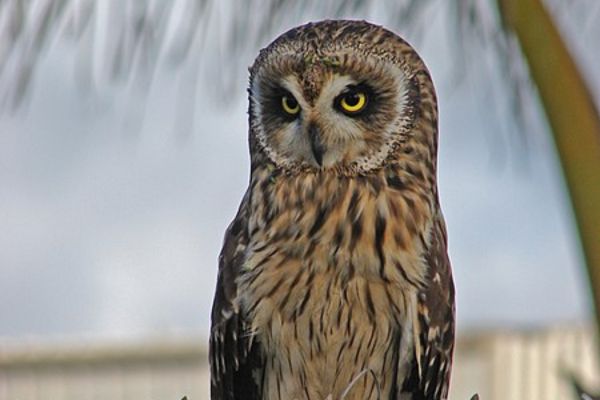
Scientific name: Asio flammeus sandwichensis
While the short-eared owl can be found in many places, this is a subspecies only found on the Hawaiian Islands. Often referred to as Pueo, these owls actually hunt during the day in open pastureland and forests. They have mottled brown and white plumage, with large, bright yellow eyes. You’ll likely see them perched on fenceposts or dead trees, or flying low over open fields. The Pueo is an important part of Hawaiian culture and mythology, and is considered a sacred bird by many Native Hawaiians. They are looked at as ‘aumakua, family guardian spirits.
Habitat: all the main islands from sea level to 8,000 feet. Most common in open grassland, shrubland and parkland.
Best Places to Birdwatch in Hawaii
The good news is, many bird species can be found at resorts, golf courses and beaches…which are places you were probably going to include in your visit to begin with. But many of Hawaii’s endemic birds are either found in protected and restricted preserves, or in hard to reach high elevation rainforest.
Below we will give you some public accessible spots or observation points to try your luck. If you want to go above and beyond and have access to all the very best locations that might be permit restricted or require 4-wheel vehicles, try a birding tour! These tours are lead by local experts that know all the best spots to visit to glimpse the rarest native species. They also may have access to areas that are otherwise closed to the general public.
But if you want to more casually explore the islands yourself and combine birdwatching with sightseeing, below we list some great spots on each island that are open to the public. Be prepared for hot sun at low elevations and cool, wet forest at high elevations, and make sure you have everything you need with our packing list.
Hawai’i, aka the “Big Island”

‘Aimakapa Pond: Located inside the Kaloko-Honokohau National Historic Park, this pond has become a refuge for many wetland birds. Right next the the coast, this pond is cut off from the ocean by sea dunes. Historically Hawaiians used this pond to raise fish for the chiefs. A great place for coots, stilts, egrets and other waterfowl.
Hawai’i Volcanoes National Park: many birds can be spotted at locations and trails around the volcano rim such as the visitors center, thurston lava tube and jaggar museum and walking the devestation trail. At this elevation, you may find honeycreepers, elepaio, nene, hawaiian hawks and many other forest birds.
Wailoa River State Recreation Area: this picturesque park surrounds a spring-fed estuary. Here you may see nene, zebra doves, waxbills, canaries, finches, sparrows, gulls and ducks.
‘Akaka Falls State Park: follow the 0.4 mile loop trail through tropical vegetation to a beautiful waterfall overlook. You may be able to spot forest birds like the Apapane, I’iwi, finches, leiothrix, cardinals and munias.
Pu’u Wa’awa’a ‘Ohi’a Trail: this reserve has a walking trail through old growth forest, located on an ancient cinder cone. Beautiful views and great habitat for both native and exotic species.
Pu’u Huluhulu Trail: right off Saddle Road, this forested hill is a welcome spot of green surrounded by lava fields from the 1843 flow. A great stop-over spot for birds passing through the otherwise barren area.
Wondering which species you saw? Check our list of 31 birds found on the Big Island.
O’ahu
The James Campbell National Wildlife Refuge on Oahu’s North Shore is a great place to see a variety of waterbirds. Among the many species you may want to check for are bristle-thighed curlew, hawaiian coot, black-necked stilt, northern pintail, northern shoveler, laysan albatross, and wandering tattler.
Lyon Arboretum: a lovely botanical garden with lush grounds managed by the University of Hawaiʻi at Mānoa. There are several trails to walk on the grounds, and even more in the area such as the Manoa Falls trail. The parking is minimal so get a reservation ahead of time or take the bus to Manoa Road.
Kuli’ou’ou Valley Trail: a 3-mile round trip trail through lush forest habitat. Look for bulbul, shamas, leiothrix, warbling white-eyes, doves, canaries and more.
Ho’omaluhia Botanical Garden: this refuge includes a pond, trails and beautiful views lush with tropical plants. A great place to find birds that enjoy gardens and parks while enjoying a variety of flora.
Rabbit Island (Manana Island): you won’t be able to set foot on this protected seabird sanctuary, but you can view the island from the shores of O’ahu. During the spring and summer, sooty terns, petrels, brown noddies, red-tailed tropic birds and wedge-tailed shearwaters nest on rabbit island. You can view the island from many beaches on the windward coast, or from Makapuu Point where the lighthouse is located.
‘Aiea Loop Trail: located in Keaiwa Heiau State Rec Area, this loop trail is a great place to get up into the mountains and look for native and non-native forest birds.
Kawainui Marsh Wildlife Sanctuary: this large wetland area provides habitat for native and endangered waterbirds, but many songbirds also enjoy this area. While most of the marsh is closed off, there are a few viewing areas along the perimeter and a walking trail accessible from Kaha Park.
Ka’ena Point State Park: this remote park features a 3 mile walk through volcanic coastline to Ka’ena point, the western-most spot on the island. View sea birds, coastal plants and marine mammals. Some sought-after species seen here are the red-footed booby, black noddy, pacific golden plover, laysan albatross, brown noddy and wedge-tailed shearwater.
Wondering which species you saw? Check our list of 33 birds found in O’ahu.
Maui
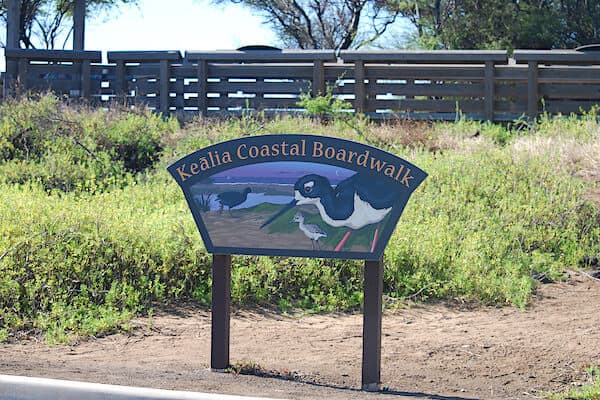
Hosmer Grove in Haleakala National Park: a short, 0.6 mile loop that is a prime spot for encountering native forest birds. It’s located near the summit of Haleakala, so an easy stop-off on the way to visit the volcano. A mix of native and non-native trees, this is a good spot to try and see the apapane, maui ‘alauahio, Hawaii amakihi, and i’iwi honeycreepers. The nene goose and Pueo owl are also seen in this area.
The Kealia Pond National Wildlife Refuge: this coastal wetland is a great place to go on Maui to spot migratory shorebirds and waterfowl. The boardwalk is easy to access and acts as a great viewing platform. Here you can spot black-crowned night herons, Hawaiian coots, black-necked stilts, plovers, ruddy turnstones, sanderlings, and ducks.
Wai’Anapanapa State Park: if you’re braving the “road to Hana” you may want to stop off here to view the black sand beach, stone arch and lava tube. The offshore lava rocks and cliffs are great for spotting seabirds like the black noddy, white-tailed tropicbird, pacific golden plover, and great frigatebird.
Polipoli State Park: four hiking trails can be accessed from this park located inside the Kula Forest, the Haleakala ridge trail, plum trail, polipoli trail and redwood trail. A good spot for for the common honeycreepers as well as other forest birds like the red-billed leiothrix and warbling white-eye.
Wondering which species you saw? Check our list of 36 birds found in Maui.
Kauai

Koke’e State Park: one of the best places to look for native forest birds that only live in the rainforest at high elevations. A steep drive up through Waimea Canyon, the park offers many trails at all levels of difficulty and amazing views.
Kilauea Point NWR: from the overlook and the lighthouse, this coastal spot is great for seabirds. You’ll often spot the Hawaiian goose and cattle egrets on the grounds. Red-footed boobies, great frigatebirds, brown boobies, wedge-tailed shearwaters, laysan albatross and both red-tailed and white-tailed tropic birds are all common.
Hanalei NWR: this wetland refuge is located in a valley, and is a protected area to aid in recovery of endangered species such as the Hawaiian duck, Hawaiian coot, Hawaiian stilt and Hawaiian goose. Closed from the public, there is a viewing area along the Kuhio Highway in Princeville. Bring those binoculars!
Keahua Arboretum: a beautiful landscape of native and non-native plants planted by the University of Hawaii. Features easy forest hikes to see some non-native species including doves, cattle egrets, munias, Chinese hwamei and laughingthrush.
Molokai
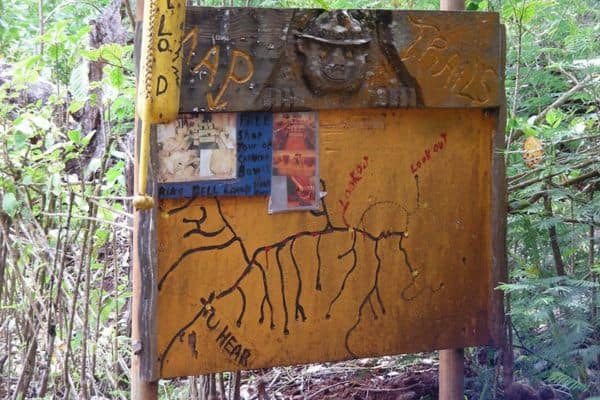
The Kamakou Preserve provides protection (through the Nature Conservancy) for a significant portion of the island’s native rainforest. A great place to try and find native rainforest birds and see unspoiled habitat. Access is limited to a once monthly hike lead by staff, so make sure you use the contact information in the link to get a reservation.
Halawa Beach Park: enjoy a double coved beach in a stunning valley, with plenty of opportunity to view common park birds, shore birds and flying seabirds.
Lanai
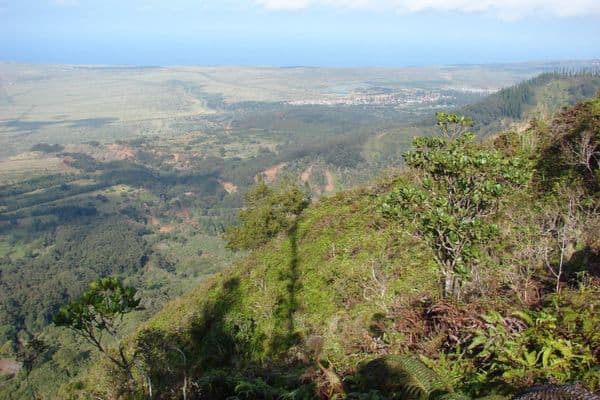
The Munro Trail on Lanai takes you through upland forests, where you may spot the Lanai ‘Elepaio and the endemic Lanai Hookbill. The trail is 12.8 miles long, but even just enjoying a mile or two is worthwile.
Hulopo’e Beach Park: one of the islands most popular beaches, a great place to spend and afternoon and look for some birds. Cardinals, sparrows, mynas, finches and doves will be hanging around the park. You may spy the Pacific golden plover or wandering tattler along the shore, or see tropicbirds and frigatebirds fly by.
